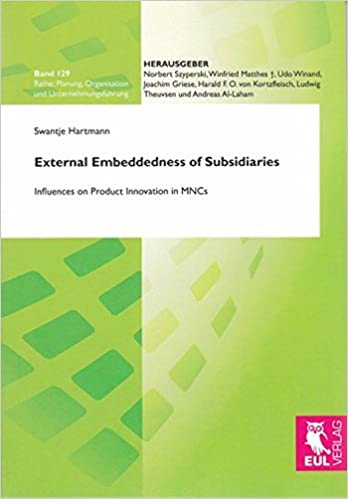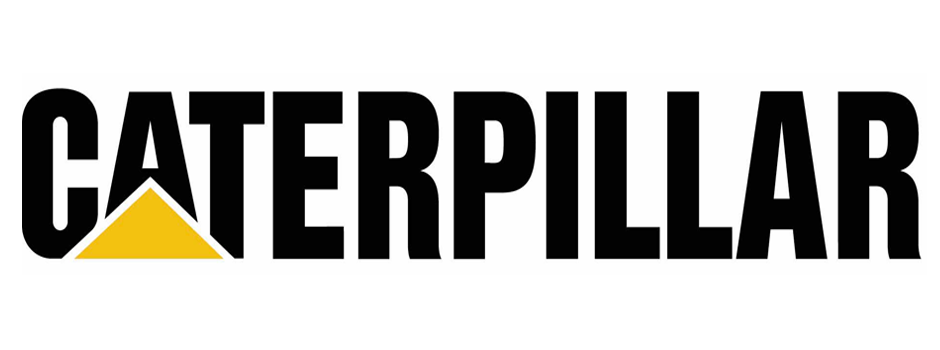Contents
Buffett said before investors become too sure of themselves, it is important to realise that “there is a lot more to picking stocks than to work out which is going to be the most wonderful industry in the future”. Analysts said new investors should stay selective in stock picking and should not try to time the market. “But we have to remember that they are always expensive at the low end of an economic cycle. We believe the valuation re-rating is behind us and returns will be driven by a doubling of earnings over the next 4-5 years,” Jaipuria said. Jyotivardhan Jaipuria, Founder and CEO of Valentis Advisors, pointed out if we look at the Buffet indicator or any other valuation parameter, it is clear that valuations are above the long-term averages. “The key metric to watch will be inflation, where any increase beyond the comfort zone of central banks will lead to a reversal of the current easy money policies,” he said. The market-capitalisation (m-cap) of BSE-listed firms has topped the $3 trillion mark, making India the world’s eighth-largest stock market after the US, China, Hong Kong, Japan, UK, France and Canada.

The other necessary measure for India is to “tighten and improve the bankruptcy law”, according to Kravis, who is one of the most influential voices in the world of private equity. In the US, the m-cap-to-GDP ratio has hit 200 per cent and in Taiwan, it is screaming at 300 per cent currently. Sharma also believes that the Buffett indicator is less useful for an economy like India with a substantial proportion of GDP being from unorganised and the SME segment and is outside of the listed space. Relli added that the impact on denominator is estimated to be much higher than that of the numerator. Hence, the actual indicator number may still be lower than the long-term average. This is the detailed historical chart of the original TMC / GDP ratio and modified TMC / (GDP + Total Assets of Central Bank) ratio.
Nifty PE ratio is the primary indicator which can help you decide whether the markets are overpriced or under-priced. But there has been a steep fall in earnings of companies like ONGC, Maruti Suzuki etc. Historically, a Nifty 50 PE ratio of more than 25 means the market is overvalued. So the present argument that the Indian market is “expensive but nowhere closer to bubble territory” based on historical PE ratio and Buffet Indicator trends, may become totally redundant. The market participants might have to evolve new parameters for valuing the market that would be appropriate in the evolving scenario. Siblis Research Ltd is an enterprise-level data provider focusing on global equity valuation data.
In terms of market cap-to-GDP — called the Buffett Indicator — India trades above 100 per cent, thanks to the contraction in GDP in FY21, he said. In terms of market cap-to-GDP — called the Buffett Indicator — India trades above 100 per cent, thanks to the contraction in GDP in FY21. Indian companies can raise debt from non-residents through two routes. The FPI route is for foreign investment in rupee-denominated debt.
Data Sources
The reason he says this is that it’s a simple way of looking at the value of all stocks on an aggregate level, and comparing that value to the country’s total output, which is its gross domestic product. This relates very closely to a price-to-sales ratio, which is a very high-level form of valuation. This argument assumes a near-perfect correlation between economic growth and stock market performance. The rise in market cap is purely due to PE re-rating due to excess liquidity or other reasons and may not actually represent an improvement in underlying economic fundamentals. The most common practice is to use GDP when calculating the cap-to-economy ratio but using Gross National Income gives more accurate results. GDP takes only account the domestic economic activity inside a country.
If the share of profits reverts back to its cyclically adjusted average, stock markets will look overvalued. The Buffett Indicator is a broad measure of stock market valuations. It is the ratio of the total stock market capitalization to the gross domestic product of the country in question. Just for reference, the total stock market capitalization includes all publicly-traded companies. The data format and delivery method can be individually customized based on your requirements.
- Based on the historical ratio of total market cap over GDP (currently at 157.1%), it is likely to return 1.8% a year from this level of valuation, including dividends.
- The Buffett Indicator is a broad measure of stock market valuations.
- For India, the average 10-year m-cap-to-GDP ratio has stood at 79 per cent, as much of the economy is unlisted and nonformalised.
- This can result in current earnings estimates looking a bit stretched as was seen in Q4FY21, wherein results beat on revenue front for the most part but missed on margins,” said Amit Shah, head of India equity research at BNP Paribas.
Therefore, if a company pays out dividends while still growing earnings, the dividend is an additional return for the shareholders besides the appreciation of the business value. Thus, if we compare with the historical average market cap to GDP ratio of 75. Thus, we can say that current market outlook is noticeably overvalued as compared with historical average.
A Nifty 50 PE ratio of more than 25 means an expensive market and investors often book profits at such high levels. Premium Indian stocks are expensive even when one looks at the valuations taking into account the price-to-earnings ratio. The Warren Buffet Indicator has already become less relevant in the case of Indian markets.
Buffet Indicator in India
The applicability of the buffett indicator is higher when the market cap reflects a much larger share of economic activity in the country. That is why the ratio is widely used in the advanced/developed countries like the US, UK, Singapore, Germany, Sweden where more of business comes under the formal sector. Since 2008, profits have steadily declined as a percentage of GDP. While they stabilized in 2018–2019, with the outbreak of the COVID-19 pandemic, the line has trended down again in 2019–2020 and will likely continue to in 2020–2021. In this chart, the “Historical Trend Line” is an exponential regression line illustrating the historic growth rate of the Buffett Indicator ratio.

Valuation is at the heart of any investment decision, whether that decision is to buy, sell, or hold. In The Little Book of Valuation, expert Aswath Damodaran explains the techniques in language that any investors can understand. As an analysis of key variables suggests, the fundamentals of the Indian economy were already quite weak even in January last year — well before the pandemic. For example, if one looks at the recent past , India’s GDP growth pattern resembled an “inverted V” even before Covid-19 hit the economy.
Buffett Indicator: Where Are We with Market Valuations?
Given the high volatility of the stock market value, the ratio tends to deviate from the trend line quite materially, sometimes for decades at a time. Economic activity, the ratio of these two data series represents expected future returns relative to current performance. (A bit similar to the P/E ratio of a particular stock.) It stands to reason that this ratio would remain relatively stable over time, increasing slowly as new technology buffett indicator india 2021 creates more efficient returns from labor and capital. Market Capitalisation to GDP ratio is also known as the Warren Buffett indicator. Analysts at BofA Securities point out that Nifty’s two year forward PE at 19 times is at a peak, and an 8% premium to long-term average, thus limiting future upside. The foreign brokerage house is of the view that expensive valuations are one of the key dampeners for Indian equities.

Correlation between Buffett Indicator valuation ranking and subsequent S&P500 returns. The highest stock market returns tend to come after periods of undervaluation . Periods of relative overvaluation , particularly at the extreme, tend to be followed by lower S&P500 returns five years later. What is “The Buffett indicator” and why does it work for most global economies, but not India? The indicator shows whether or not market valuations are in sync with economic reality.
Market Valuation Indicator #3: Market Capitalisation (Market Cap) to GDP Ratio
A big boost by Union Budget 2021, Bumper Dec-20 quarter earnings and better-than-expected economic recovery supported to sustain FII momentum and optimism in the market. Strong Recovery of Markets is evident from the current all-time high index levels. From Dalal Street to Wall Street, Bull run continues on the bourses. All major Global Indices are trading at Life-time high levels currently.
Market Valuations Indicator #1: Nifty Price to Book Value (PB).
Below is a chart showing the interest rate of the 10 Year US Treasury Bond. This is the most vanilla bond there is, and over the last 50 years the interest rate on it has averaged 6%. During the peak of the .com bubble when the Buffett Indicator was very high, the 10Y Treasury rate was a bit higher than average, around 6.5%, showing that low interest rates weren’t juicing the stock market. Today the https://1investing.in/ Buffett Indicator is still quite high relative to its historical trend line, but interest rates are still relatively low. While it is never possible to predict future stock market performance, it is simple to look at historical data to see how the market has performed after periods of high and low valuation of the Buffett Indicator. GDP represents the total annual production of the US economy.
To that extent the numerator and the denominator are not entirely comparable. Both Indices – Sensex & Nifty are trading at Life-time Highs on February 16, 2021. Though market has gone through a little correction in March-2021, with the rising US G-Sec Yield. As a results of which FII started pulling funds from Emerging markets like India. A Price/Sales ratio of greater than 1.0x (or 100%) is generally considered a sign of being overvalued. On the other hand, companies trading below 0.5x (or 50%) are considered to be undervalued.
The historical chart of the Buffett Indicator is shown below – for much more analysis and information on our data sources, methodology, and counterpoints, keep scrolling. Curated newsletters on markets, personal finance, policy & politics, start-ups, technology, and more. The author is a Certified Financial Planner with 5 years experience in Investment Advisory and Financial Planning.



